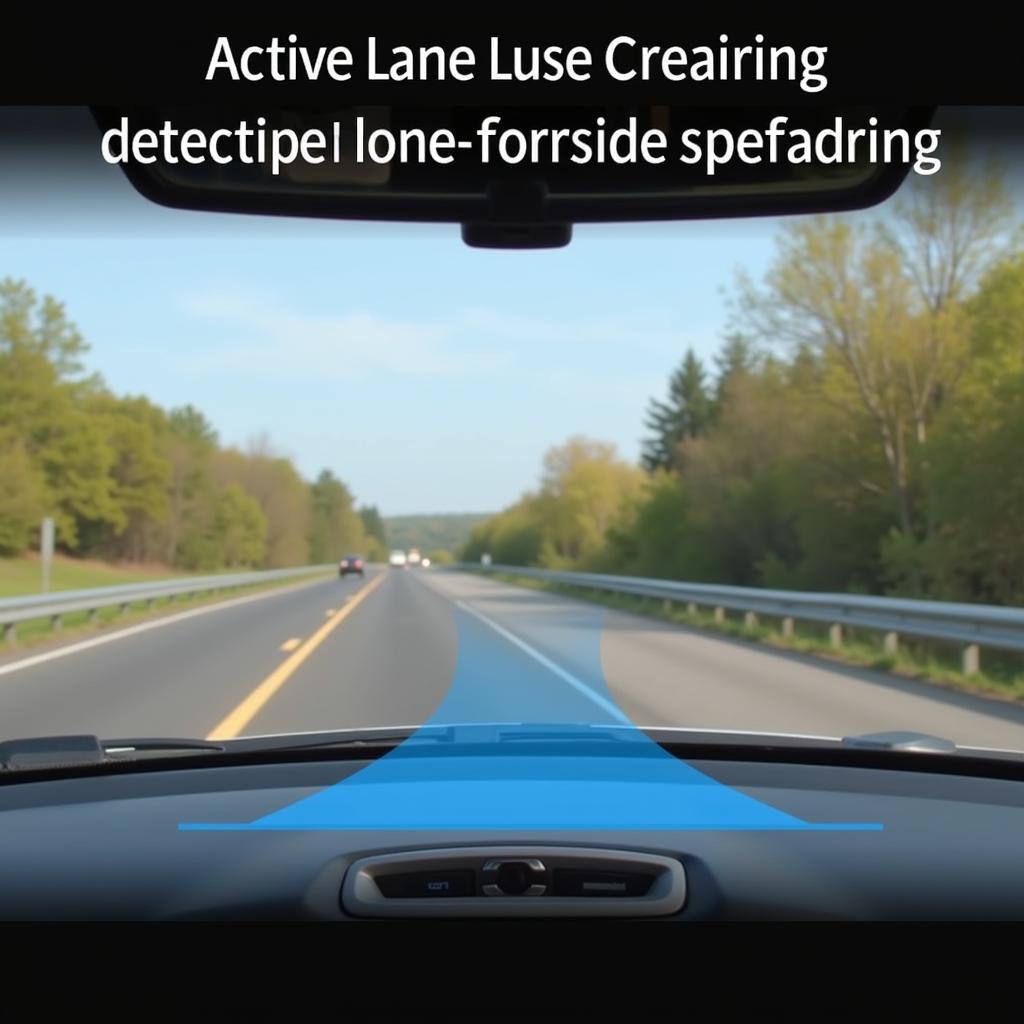Autonomous driving is rapidly evolving, with features like active lane control and traffic-sign recognition becoming increasingly common in modern vehicles. These Level 2 autonomous drive technologies represent significant steps towards fully self-driving cars, enhancing both safety and convenience for drivers.
This article delves into the intricacies of these two crucial autonomous driving features, exploring how they work and the benefits they offer.
How Active Lane Control Works
Active Lane Control (ALC), also known as Lane Keeping Assist (LKA), is a driver-assistance system that helps vehicles stay centered within their lane markings. This technology utilizes a forward-facing camera, typically mounted behind the windshield, to detect lane lines on the road.
 Active Lane Control Camera
Active Lane Control Camera
By analyzing the data from the camera, the system determines the vehicle’s position relative to the lane markings. If the vehicle starts to drift out of its lane without the driver signaling, ALC intervenes. This intervention can take different forms depending on the system’s sophistication and manufacturer:
- Steering Wheel Vibration: Providing a tactile warning to alert the driver.
- Gentle Steering Correction: Applying subtle steering inputs to guide the vehicle back into its lane.
- Torque Vectoring: Adjusting the braking force on individual wheels to maintain lane position.
It’s important to note that ALC is not intended to replace attentive driving. It’s a support system designed to assist drivers, not to take over control entirely. Drivers should always maintain control of the vehicle and be prepared to override ALC if necessary.
The Benefits of Active Lane Control
Active Lane Control offers several advantages, contributing to safer and more comfortable driving experiences:
- Reduced Driver Fatigue: By assisting with lane keeping, ALC lessens the driver’s workload, especially during long journeys, making driving less tiring.
- Enhanced Safety: ALC helps prevent unintentional lane departures, a common cause of accidents, improving overall road safety.
- Improved Lane Discipline: The system promotes better lane discipline by subtly encouraging drivers to stay within their designated lane.
How Traffic-Sign Recognition Functions
Traffic-Sign Recognition (TSR) is an advanced driver-assistance system that uses cameras or a combination of cameras and sensors to identify and interpret road signs. The system then relays this information to the driver, usually through visual displays on the dashboard or head-up display (HUD).
 Traffic Sign Recognition Display
Traffic Sign Recognition Display
TSR systems are designed to recognize a wide range of signs, including:
- Speed Limits: Identifying and displaying current speed limits to the driver.
- Warning Signs: Recognizing and alerting the driver about potential hazards such as sharp curves or pedestrian crossings.
- Prohibitory Signs: Detecting and informing the driver about restricted actions like no overtaking or no entry.
The Advantages of Traffic-Sign Recognition
Traffic-Sign Recognition offers several benefits that contribute to a safer and more informed driving experience:
- Increased Awareness: By providing clear and timely information about road signs, TSR helps drivers stay aware of their surroundings and make informed decisions.
- Reduced Risk of Violations: The system helps prevent unintentional traffic violations by reminding drivers of speed limits and other regulations.
- Enhanced Safety in Unfamiliar Areas: TSR is particularly beneficial in unfamiliar locations, providing drivers with essential information about local traffic rules.
The Future of Active Lane Control and Traffic-Sign Recognition
Active Lane Control and Traffic-Sign Recognition are continually evolving, becoming more sophisticated and capable with advancements in technology. These systems are essential building blocks for higher levels of autonomy in self-driving vehicles.
 Autonomous Vehicle Future
Autonomous Vehicle Future
As these technologies mature, we can expect:
- Increased Integration: Greater integration of ALC and TSR with other vehicle systems, such as adaptive cruise control and automatic emergency braking, creating a more cohesive and autonomous driving experience.
- Improved Accuracy and Reliability: Ongoing development will lead to even more accurate and reliable systems, capable of handling more complex driving scenarios.
- Expanded Functionality: The future holds the potential for expanded functionality, such as recognizing and responding to temporary traffic signals or construction zone signage.
Conclusion
Active Lane Control and Traffic-Sign Recognition are revolutionizing the driving experience, offering enhanced safety, convenience, and awareness on the road. As key components of autonomous driving, these technologies pave the way for a future where cars can navigate and make decisions with increasing autonomy, ultimately making our roads safer and our journeys more efficient.
